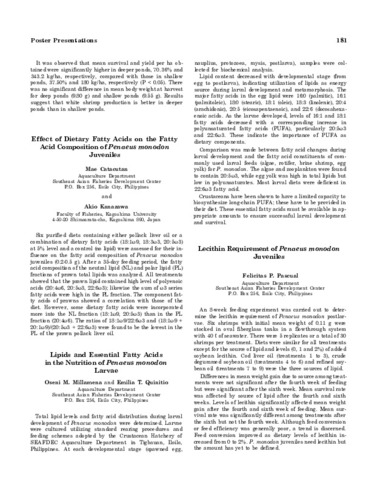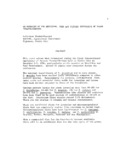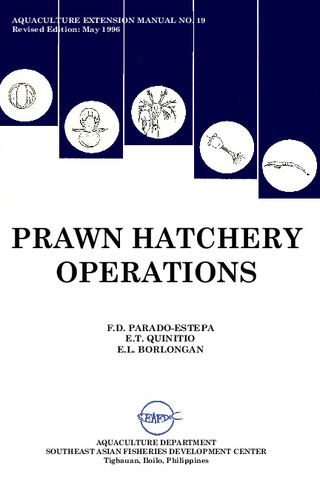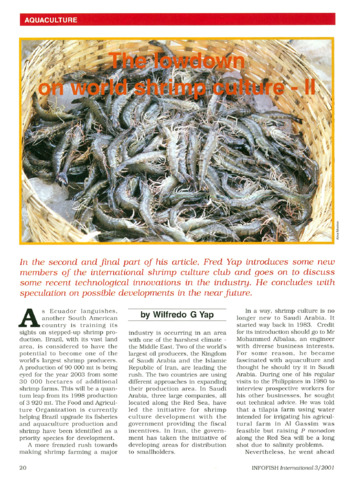Lecithin requirement of Penaeus monodon juveniles
Share
Abstract
An 8-week feeding experiment was carried out to determine the lecithin requirement of Penaeus monodon postlarvae. Six shrimps with initial mean weight of 0.11 g were stocked in oval fiberglass tanks in a flowthrough system with 40 ℓ of seawater. There were 5 replicates or a total of 30 shrimps per treatment. Diets were similar for all treatments except for the source of lipid and levels (0, 1 and 2%) of added soybean lecithin. Cod liver oil (treatments 1 to 3), crude degummed soybean oil (treatments 4 to 6) and refined soybean oil (treatments 7 to 9) were the three sources of lipid.
Differences in mean weight gain due to source among treatments were not significant after the fourth week of feeding but were significant after the sixth week. Mean survival rate was affected by source of lipid after the fourth and sixth weeks. Levels of lecithin significantly affected mean weight gain after the fourth and sixth week of feeding. Mean survival rate was significantly different among treatments after the sixth but not the fourth week. Although feed conversion or feed efficiency was generally poor, a trend is discerned. Feed conversion improved as dietary levels of lecithin increased from 0 to 2%. P. monodon juveniles need lecithin but the amount has yet to be defined.
Description
Abstract only.
Suggested Citation
Pascual, F. P. (1985). Lecithin requirement of Penaeus monodon juveniles (Abstract only). In Taki Y., Primavera J.H. and Llobrera J.A. (Eds.). Proceedings of the First International Conference on the Culture of Penaeid Prawns/Shrimps, 4-7 December 1984, Iloilo City, Philippines (p. 181). Iloilo City, Philippines: Aquaculture Department, Southeast Asian Fisheries Development Center.
Taxonomic term
Related items
Showing items related by title, author, creator and subject.
-
An overview of the nutrition, feed and feeding techniques of prawn penaeid/shrimps
Piedad-Pascual, Felicitas (Philippine Council for Aquatic and Marine Research and Development, 1989)This paper echoes what transpired during the first International Conference of Penaeid Prawns/Shrimps held in Iloilo City in December 4-7, 1984, particularly on the Nutrition nd Feed Development. Around 25 papers were ... -
Prawn hatchery operations
Parado-Estepa, Fe D.; Quinitio, Emilia T.; Borlongan, Emeterio L. (Aquaculture Department, Southeast Asian Fisheries Development Center, 1996-05)The manual, an updated version of the 1984 SEAFDEC/AQD manual, presents the underlying principles and step-by-step instructions of prawn larval and post-larval rearing. The techniques described are not only applicable to ... -
The lowdown on world shrimp culture - II
Yap, Wilfredo G. (INFOFISH, 2001)This paper introduces some new members of the international shrimp culture club and goes on to discuss some recent technological innovations in the industry, particularly the polyculture of tilapia (mainly Oreochromis ...





